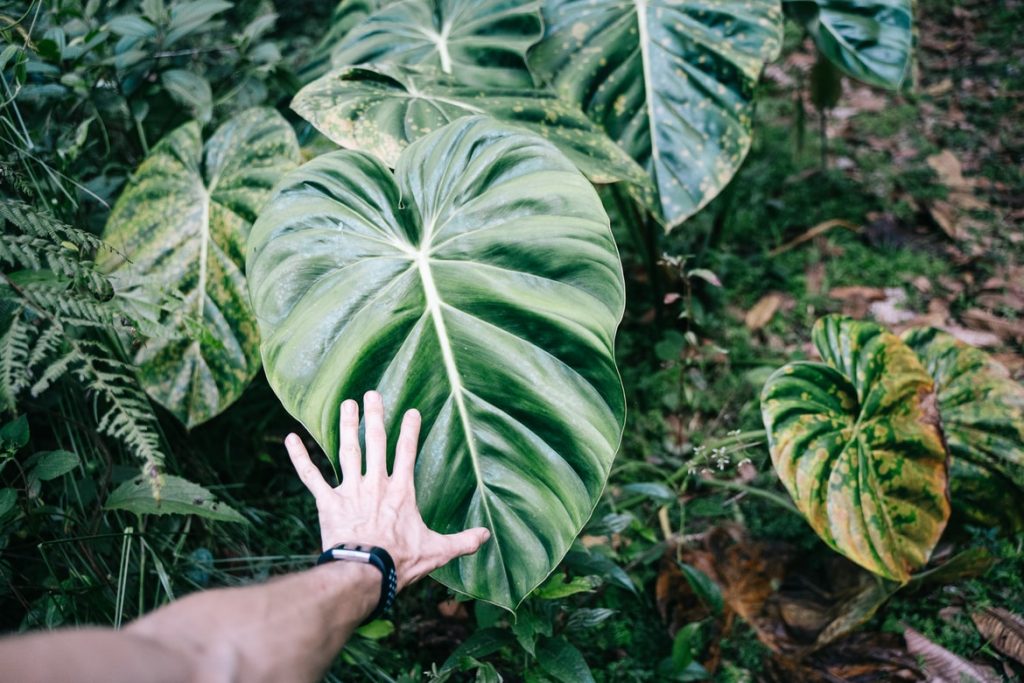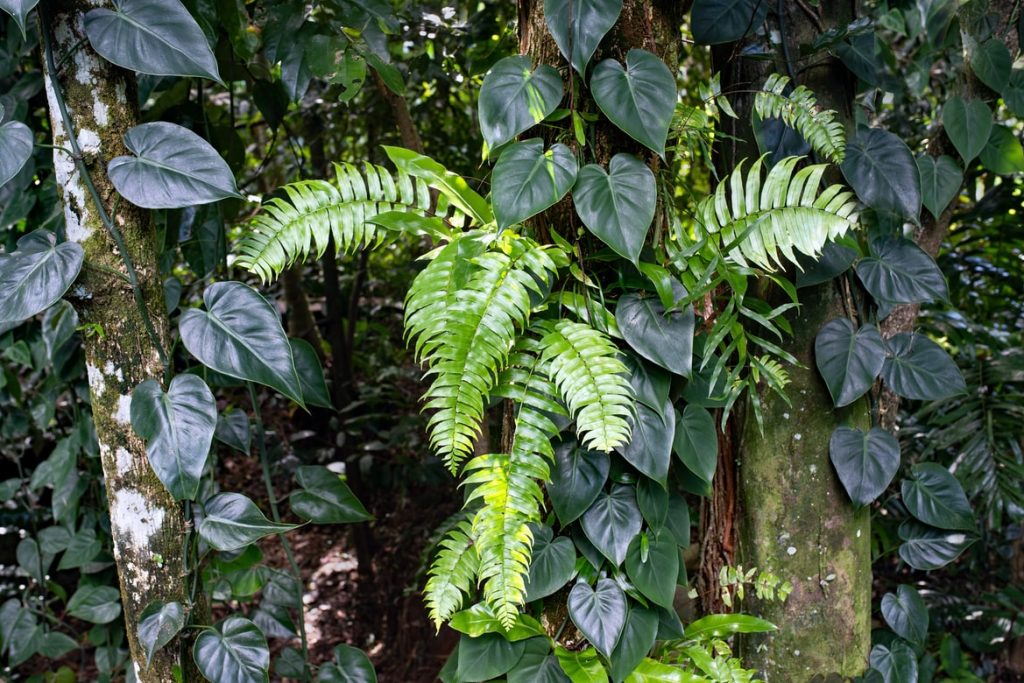What are Philodendrons: A Green Plant That can be Grown Indoors
Philodendron is a kind of trailing plant of genus Philodendron in Araceae. Its leaves are peculiar and varied, and its aerial roots are slender and dense. It is very shad-tolerant and makes people feel like entering a tropical rainforest when placed indoors.

Morphological Characteristics
Climber, internodes more or less elongated or sparsely prostrate. Stem sparsely extremely short to nonexistent, sometimes arborescent with adventitious aerial roots.

Branchlets leafy, petiole with long sheath; Old branches with leaves and terminal inflorescences and often with scaly leaves. Leaf-sheath apically often ligulate; Petiole variously, cylindrical, flat, grooved or deeply concave above, margin fibrous, sometimes hyperfleshy, apex thickened into articular; Leaf blade papery, subleathery, more or less elongate oblong, ovate or oblong, base more or less deeply cordate; Halberd, arrow, or irregularly lobed, 3-lobed, pinnate or secondary pinnate.
Lateral veins are all parallel, equal, or grade I lateral veins are thicker, with grade II lateral veins slanting or parallel. The peduncle is usually short. Bracts thick, fleshy, white, yellow or red, tube sweeping, cylindrical or swollen, persistent, late irregularly torn; Eaves navicular ovate, oblong or lanceolate, mostly erect, fleshy in fruit period, persistent, after fruit curly disappear.

Spikelets erect, subequal with spathe, sessile or short peduncle, female inflorescences cylindrical, many flowers dense, fruit inflorescences fleshy; Male inflorescences lower (usually very short part) sterile, upper (mostly) fertile, fruiting prostrate. Flowers unisexual, perianth absent. Stamens (without anthers in sterile flowers) 2-6, sessile, obconic angular prism, extending to the base of the septum, shortly lobed near apex, pollen powdery.
Female flowers; Ovary obovoid or ovoid, 2-locular; Ovules anatropous or semi-anatropous, ascending or erect, funiculus long, mostly in two rows at a central corner, or a few (4-1) at locular base; Stigma sessile, hemispheric or sometimes 2-lobed. Berry bonding, room wallpaper quality, transparent.
Seeds numerous, few or single per cells, bearing erect funicle, ovoid, oblong or elliptic, erect, outer coat fleshy, thick, usually broad hilum, mound sometimes obscure, coat slightly thick, striate. Embryo axial, nearly as long as seed, with slightly thicker endosperm.

Ecological Habits
Philodendron is native to tropical rain forests in America. It likes high temperature, high humidity, and relatively shady environment, and has low requirements for light. Philodendron can grow well in indoor dark places and spring and autumn sunshine.
It is not resistant to cold, winter overwintering temperature should be above 10℃ like to grow in fertile drainage good micro-acidic soil.

Philodendron is strong, and it is not difficult to raise Philodendron well if temperature and humidity are well controlled.
Distribution Area
Found in tropical America.
Propagation
Commonly used method and cutting method.
As long as in the growth season take stem 1-2 section with a leaf (air root can even root), inserted into the sand bed, it is easy to take root alive, to the older plants, because the lower leaf falls off, affect ornamental, can use the method of short cut, promote axillary bud germination, cut the stem can also be used to the cottage.

Small budding tillers grow at the base of Philodendron, and the rooted tillers can be separated from the mother plant and planted separately. You can also take stem cuttings, to get more cuttings, you can go to the top of the sprout, that is, the growth season to cut the top of the plant, break the top advantage, promote the rapid germination of the lateral bud, after removing the terminal bud 10 days or so at the base of the stem will germinate, when the lateral bud long to 5 ~ 8 cm, take cuttings. Peat soil and coarse sand were mixed equally for basin soil.
Growth season to ensure water supply, so that the basin soil is in a wet state, every 3 to 4 weeks to irrigate 1 time with nitrogen fertilizer based compound liquid fertilizer, and often to the groundwater so that the environment has a higher air humidity.
Avoid direct sunlight in summer. In winter, the greenhouse temperature is kept above 15℃.

Philodendron is usually propagated by cuttings and takes root easily in high-temperature season.
Generally between April and August, cut 3-4 sections of the stem, pick the lower leaves, insert the cuttings in the matrix of leaf rot soil and river sand mixed with half, under the condition of 20 to 25℃ to maintain high air humidity, placed in half shade, easy to take root, after 2-3 weeks can take root on the basin. If they proliferate in large numbers, bud insertion can be used.
Short-stem varieties can be propagated by split-plant. When adventitious roots occur in tillers initiated at the base of the shoot, they can be cut off and planted separately.

Climbing varieties can be cut propagation, cut off long seedling age, lost ornamental value of the top tip as cuttings. Then increase water fertilizer, urge the lateral bud germination in turn, when the lateral bud length reached about 10 cm, together with the stem section cut cottage.
Note that long stems can not be cut into a short section, no bud cutting. The cottage matrix was made of peat soil, river sand, vermiculite, and other loose materials.

The site is required to be high temperature and high humidity, sealed with film and shaded with nets, and kept above 30℃ and 90% relative humidity for about two weeks, then new seedlings can be grown and transplanted on the pot.
Cultivation Techniques
Warm, humid environment, although like light, but afraid of direct sunlight, shade tolerance. Water frequently during the growing season, spray the leaves with water and apply liquid nitrogen every two weeks. The optimum temperature for growth is 20-28 ℃, and the overwintering temperature should be above 15℃. Change basin every spring, basin soil asks fecundity, contain humus-rich, and drainage is good, can make leaf yellow because of water in basin otherwise.

The best pot substrate for Philodendron is humus-rich and well-drained loam soil. Generally, one part of leaf mold soil, one part of garden soil, one part of peat soil, a little river sand, and base fertilizer can be prepared. When planting, a column can be in the basin, 3 to 5 strains of seedlings are planted all around so that its climbing growth. It likes high temperature and wet environment, must keep the basin soil moist, especially in the summer can not water, but also often to the leaf spray; But to avoid basin soil water, otherwise easy to yellow leaves.
General summer every spring watering, autumn can be 3-5 days a watering; Winter should reduce the amount of watering, but can not make the potting soil completely dry. Growth season should often pay attention to top fertilizer, fertilizer 1-2 times a month; In late autumn and winter when growth is slow or stops, fertilization should be stopped.

It likes bright light, avoid intense sunlight, general growth season to shade 50% – 60%; But it can also endure the dark indoor environment, nevertheless long time light is too weak easy to cause grow, section asks to lengthen, grow thin, go against admiring and admire.
In the indoor display, the high-temperature season should avoid direct light, low temperature season should be moved to the bright place to accept soft sunshine, not too shade so that the stems and leaves are thin and dim.

During the growing season, the basin soil should be kept wet, water should be poured on the palm column to increase humidity, and thin fertilizer water should be applied once a month.
In winter, fertilizer control water, prevent from cold wind blowing straight. The basin is turned over every spring.
Prevention and Control of Diseases and Pests
Root Rot
Root rot can occur if the substrate is too wet for a long time, the substrate is watered after drying out, substrate EC value is too high, and the root system is damaged.

Anthrax
Excessive humidity, leaf damage, is easy to cause anthrax. The diseased leaves can be cut off in the production, and then with chlorothalonil and methyl top in 800 times alternating prevention and control. The harm of Spodoptera litura; Prevention and control with 1000 times monoxide.
The Main Value

Its leaf shape is peculiar and changeable, the air root is slender and dense, the posture is dancing, and very resistant to shade, placed in the indoor, it seems to have the feeling of entering the tropical rainforest. At present, it is a larger foliage plant that is very popular and has high ornamental value.







